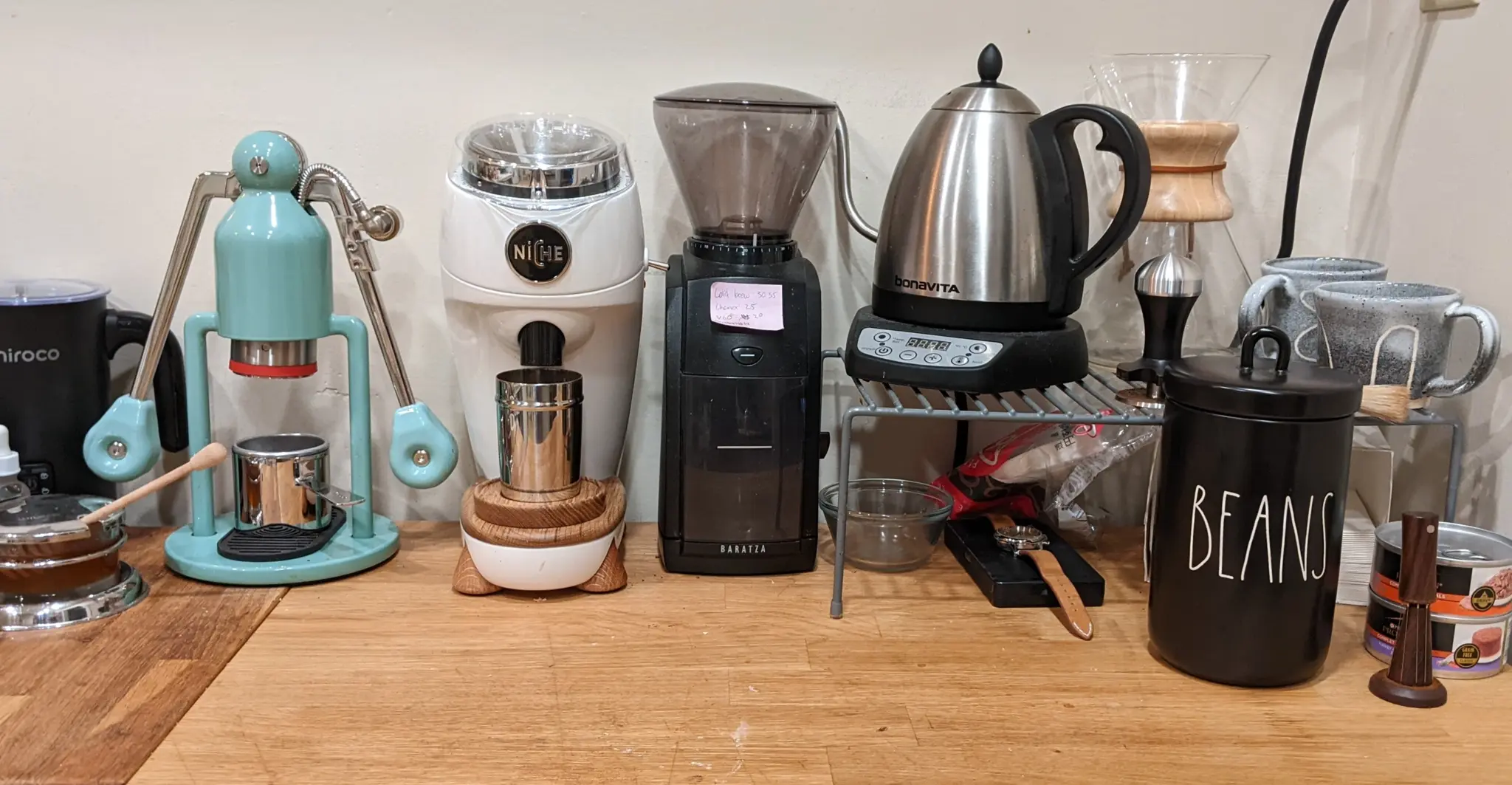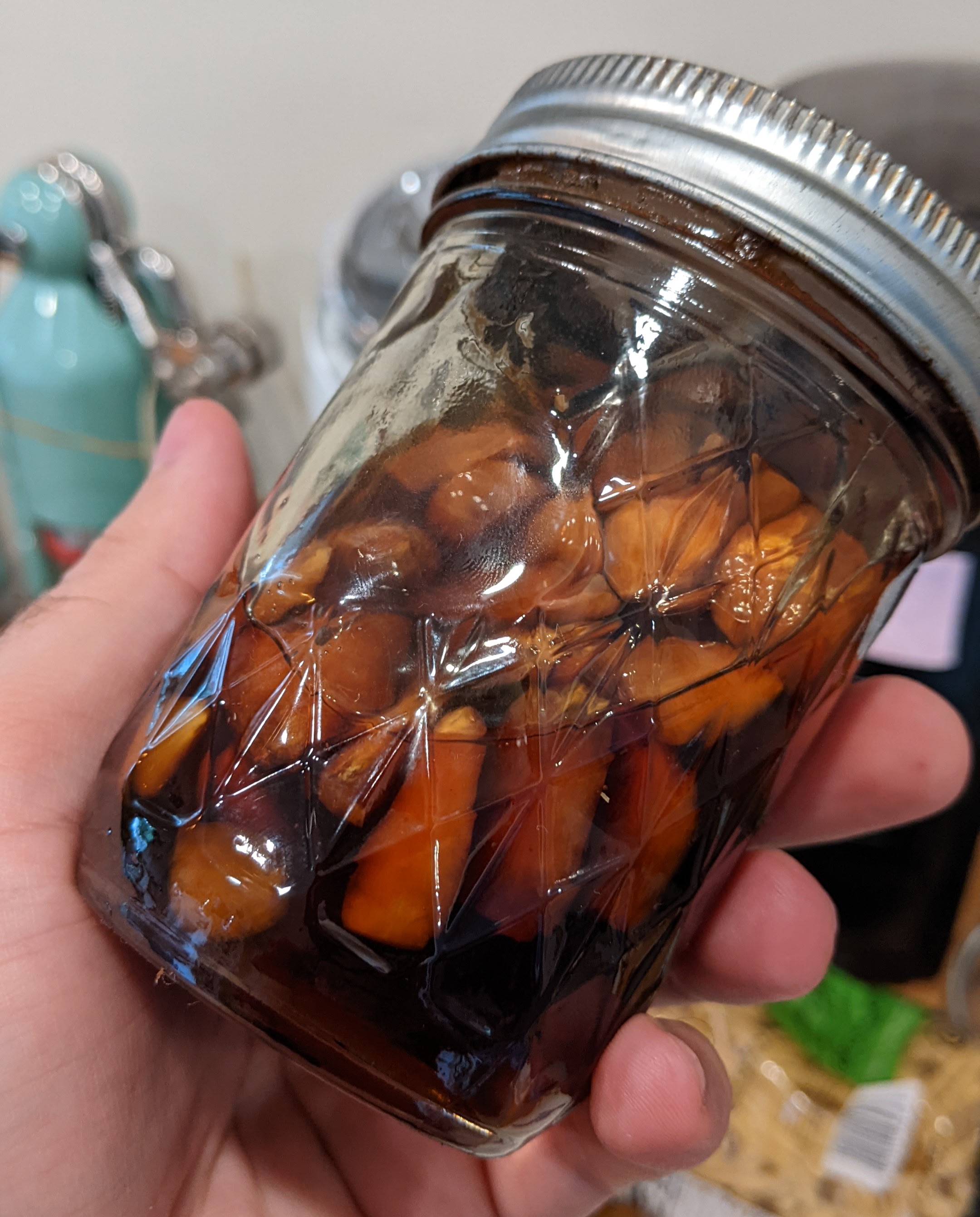Photonics Engineer by day, indie RPG writer by night, especially interested in open/CC games.
See my stuff here: http://awkwardturtle.games
- 6 Posts
- 10 Comments

 5·1 year ago
5·1 year agoThank you! I have next to nil artistic ability, so I actually really surprised myself by managing to make something I actually liked with these labels.

 4·1 year ago
4·1 year agoOoo, fantastic. I’ve been doing sugar extractions of lemon zest for a mead recently, and we tried drying and blitzing the zests after filtering.
For us the powder was nice (partly because it got a bit candied during the process) but fairly mild in taste. I think it could still absolutely be fun to use to sprinkle on desserts of drinks, for visuals if nothing else.

 4·1 year ago
4·1 year agoI’d love to do so, but the price seems to jump up by an order of magnitude and it’s difficult to justify. I’ll probably be trying a combo of filter + sulfites going forward.

 4·1 year ago
4·1 year agoHaving recently tried the filtering thing, it’s still a roll of the dice unless you’re using the much more expensive professional grade filters.
It does get your mead clear as hell though, and removes a ton of off flavors.

 2·1 year ago
2·1 year agoOur kettle actually partially died a few months ago, had a long debate about what we should replace it with before I realized the contacts on the base had just gotten bent out of place.
A buddy of mine printed the robot mittens for me, and even managed to track down a paint that nearly perfectly matches the color. I absolutely love them. How do you like the metal ones?

 2·1 year ago
2·1 year agoNice! A surprising amount of overlap with out own coffee station!


 1·1 year ago
1·1 year agoWhen in doubt, age it out!
Alternatively you could consider back sweetening, or oaking, to add some extra flavor that might counterbalance it some.

 6·1 year ago
6·1 year agoI’m no expert, been doing it as a hobby for about five years now, but from my own experience I’ll make a few notes:
- Be prepared to wait for your mead to age out, especially if you go high ABV and pure honey with no additions. If you want fast turnaround do sweet, low ABV meads or make beer instead.
- Time forgives all sins. If your mead tastes like ass, simply wait long enough and it’ll probably taste great. Sometimes that time frame is 2 or 3 years, but it’ll (probably) get there eventually. Rack into a new vessel every once in a while as long as you’re seeing sediment collect at the bottom.
- Adding nutrients, especially adding it in steps during primary, makes a huge difference. As in, being able to drink your mead in 4 months rather than a year+. I’ve found the easiest way to do it is with Fermaid O and the TOSNA Calculator. There are more complex nutrient calculators out there if you want to get deeper into the math.
- I’ve also started adding O2 during primary fermentation, although I started it around the same time I started using yeast nutrient so I can’t really tell you how much of an impact it makes.
- I’ve personally found that doing one gallon batches just isn’t worth it, for all that I see it commonly online. Unless you’re doing low ABV mead, it’s going to take time to age out into something nice. At which point if it’s good, you’ll be disappointed you didn’t do a larger batch. It takes more setup equipment and 5+ gallon glass carboys are pricey, but if you have a local homebrew store getting a basic fermentation bucket (often found in beer homebrew kits) is very worth it. That also goes with getting actual airlocks which are cheap enough that I think it’s worth picking up to take less risks with your mead
- See if you can get your honey locally, and if they’ll cut you a deal on buying in bulk. If you can’t, webstaurantstore.com has surprisingly reasonable prices for delivering 5 gallon buckets of honey.
- Making your wine sweeter is a good way to make it taste good faster without having to age as long, but do give dry meads a try! They’re very nice!
- I have filtered mead (using basic plate filters and gravity), and it improved the taste and clarity more than I was expecting. No idea how successful it was at stabilizing it because I didn’t backsweeten afterwards. From my research, if you want 100% guaranteed stabilization from filtering you’re looking at some pretty expensive equipment and filters. By the same token the science behind chemical stabilization as talked about in the OP is not as cut and dry as I was hoping, so I don’t know that there are good guarantees anywhere for this.
- Edit: Do research first if you want to attempt a bochet. Boiling honey expands to 3x the original volume, and superhot molten sugar is one of the most dangerous things you can have splattering around in your kitchen!
It’s fantastic, as simple as just chucking some garlic into a jar with honey. Wait long enough and you get a really nice almost balsamic-y garlicy liquid to drizzle on stuff (I love it on pizza). I’ve also done it with some chopped up habanero included to make it spicy.
Insert usual caveats about being careful with fermenting food at home and doing your own research, and there being a small risk of botulism.





The bochet and berry meads aren’t doing anything super out of the ordinary (well, out of the ordinary if you’re already caramelizing your honey) but the Strawberry Lemonade one is weird enough that I keep meaning to do a full write up about it.
Just gotta actually get around to setting up a blog or website or something so I can host it someplace useful.